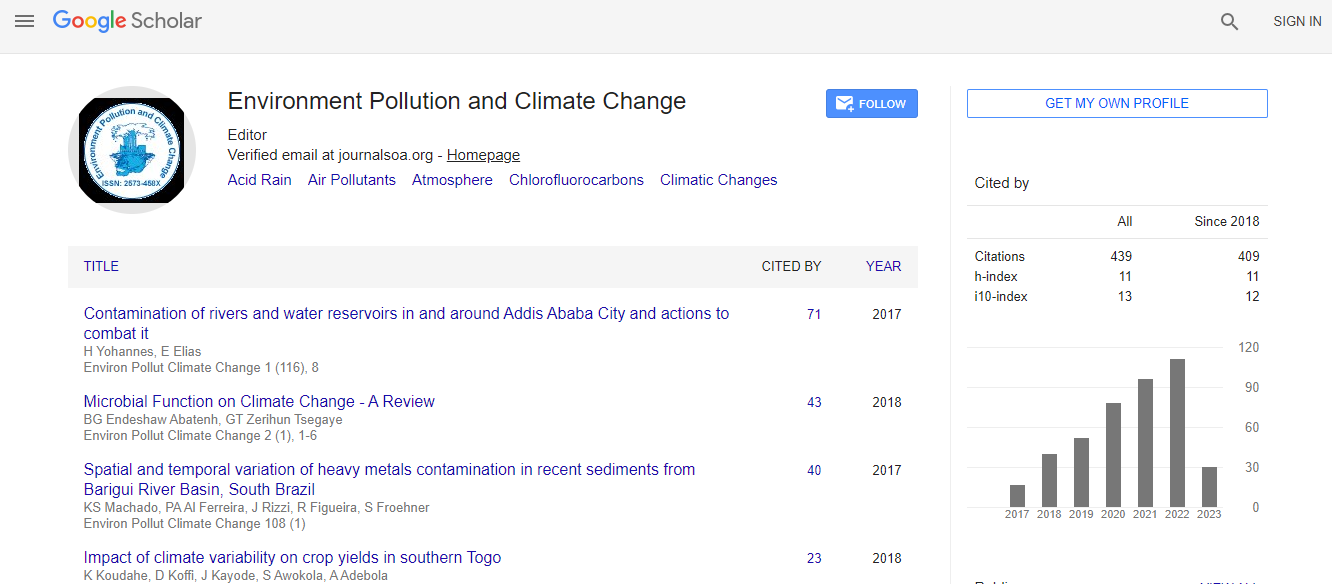Review Article
Climate Change Adaptation and Mitigation Strategies Vis-À-Vis the Agriculture and Water Sectors in Ethiopia - Case Review/Study of the EPCC Project
Nathnael Wassie Weldegebriel* and Hanna GustavssonSwedish Meteorological and Hydrological Institute, Kombolcha, Ethiopia
- *Corresponding Author:
- Nathnael Wassie Weldegebriel
Swedish Meteorological and Hydrological Institute
P.O. Box: 129, Kombolcha, Ethiopia
Tel: +251920735756
E-mail: nathnaelwassie@gmail.com
Received date: April 26, 2017; Accepted date: May 23, 2017; Published date: May 30, 2017
Citation: Weldegebriel NW, Gustavsson H (2017) Climate Change Adaptation and Mitigation Strategies Vis-À-Vis the Agriculture and Water Sectors in Ethiopia - Case Review/Study of the EPCC Project. Environ Pollut Climate Change 1:125.
Copyright: © 2017 Weldegebriel NW, et al. This is an open-access article distributed under the terms of the Creative Commons Attribution License, which permits unrestricted use, distribution, and reproduction in any medium, provided the original author and source are credited
Abstract
This study is a case review of the Ethiopian Panel on Climatic Change (EPCC) project, particularly the EPCC First Assessment Report, with special emphasis on the Mixed Crop Livestock (MCL) system, along with the water sector as it relates to climate change adaptation and mitigation strategies in Ethiopia. A key finding of this study is that there currently exist serious, direct impacts of climate change to crops, livestock, and water as compared to other economic sectors in the country. Impacts of climate change to crop sector are in terms of decreasing in both productivity/yield and cultivable land (in some crops like maize shifted from lowland areas to highland areas; while, barley since it is a highland crops, due to climate change its cultivable land diminished and productivity decreased) due to high temperature and water deficit. Despite to some extent livestock are better off even with higher temperature, overheating may significantly harm livestock production. Meanwhile, the water sector of the country gets impacted negatively by climate change by decreasing soil water, ground water and stream flow due to high evapotranspiration in some areas. To alleviate these negative impacts of climate change, there are trends of adaptation and mitigation strategies practiced at both private and community bases. Some of the explored adaptation strategies are macro-level, micro-level (farm level) and ‘No regret’ adaptations options (adaptation options which provide yields with tolerable cost even in the absence of climate change). It also discussed that there are mitigation strategies to immune level of emissions from particularly the agriculture sector (i.e., from crop, mainly livestock and natural resources). Some of the mitigation strategies identified and reviewed are: reducing expansion of cultivated land through agricultural intensification (increasing productivity by reducing Green House Gas (GHG) emission: conservation agriculture, compost, wise use of inorganic fertilizers, proper crop management); improving animal productivity through breeding; feedlots practice by smallholder farmers; improving feed and feeding management; diversification toward lower emitting animal species (small ruminants); mechanization; manure management; afforestation/reforestation; agroforestry; soil and water conservation and land rehabilitation; and reducing rate of desertification. However, it also noted that there should be given prior emphasis to adaptation than mitigation particularly in developing world like Ethiopia since it is local, complex and process based but practical and applicable, despite the trend is now shifted to it. Nevertheless, prior to intervene and/or scale up any adaptation option, there should be done livelihood based vulnerability assessment with specific to each agro-ecology and gender in the country. Doing this assessment first means, it is now easy to device or scale up any adaptation options to the community in general and women in particular. This report major finding will be reached out and communicated to the wider community via various means. There by, it will hopefully be upgraded the lower level of community awareness to climate change issues in general so that climate smart socio-economic development and well-being will be maintained and/or sustained in the country.

 Spanish
Spanish  Chinese
Chinese  Russian
Russian  German
German  French
French  Japanese
Japanese  Portuguese
Portuguese  Hindi
Hindi 
